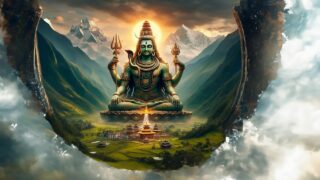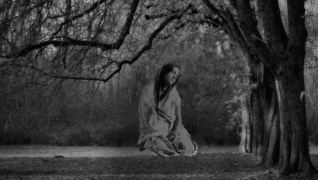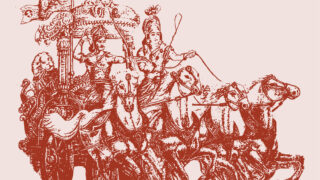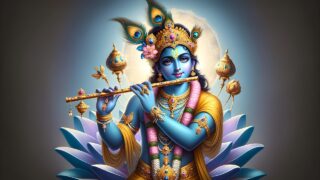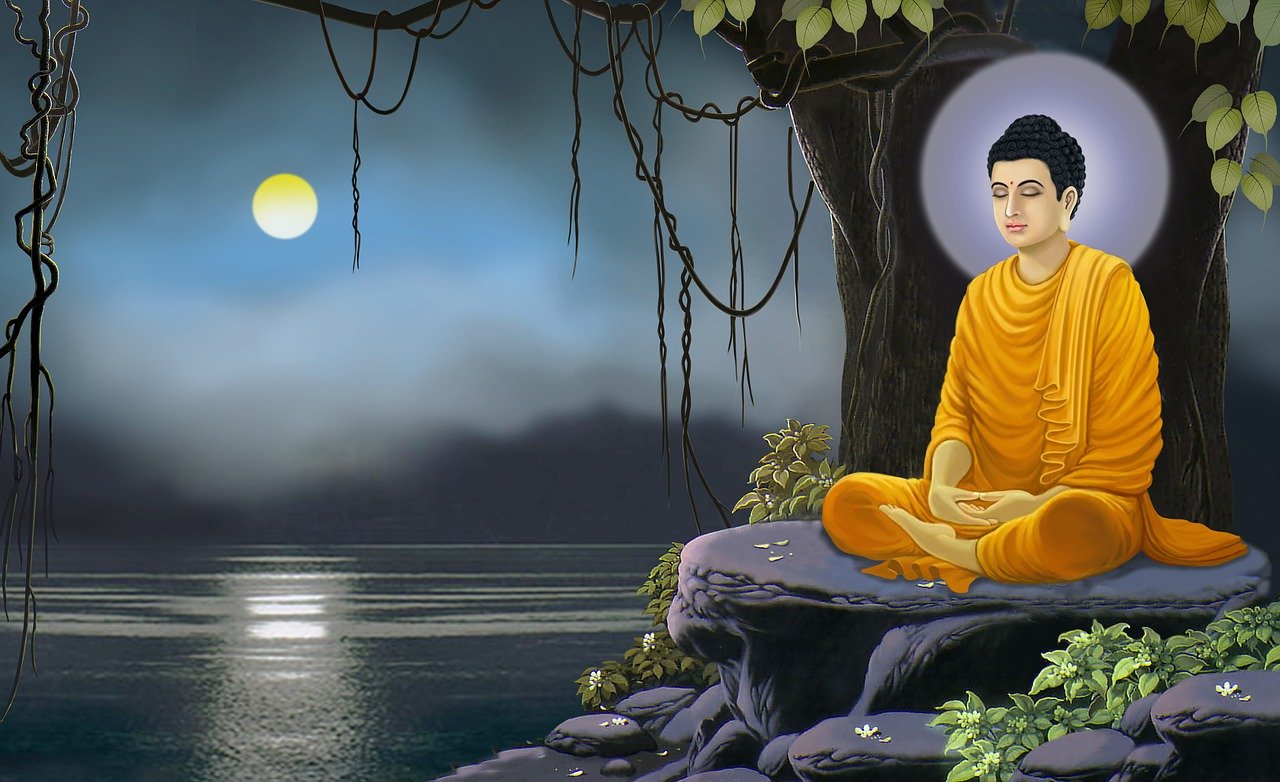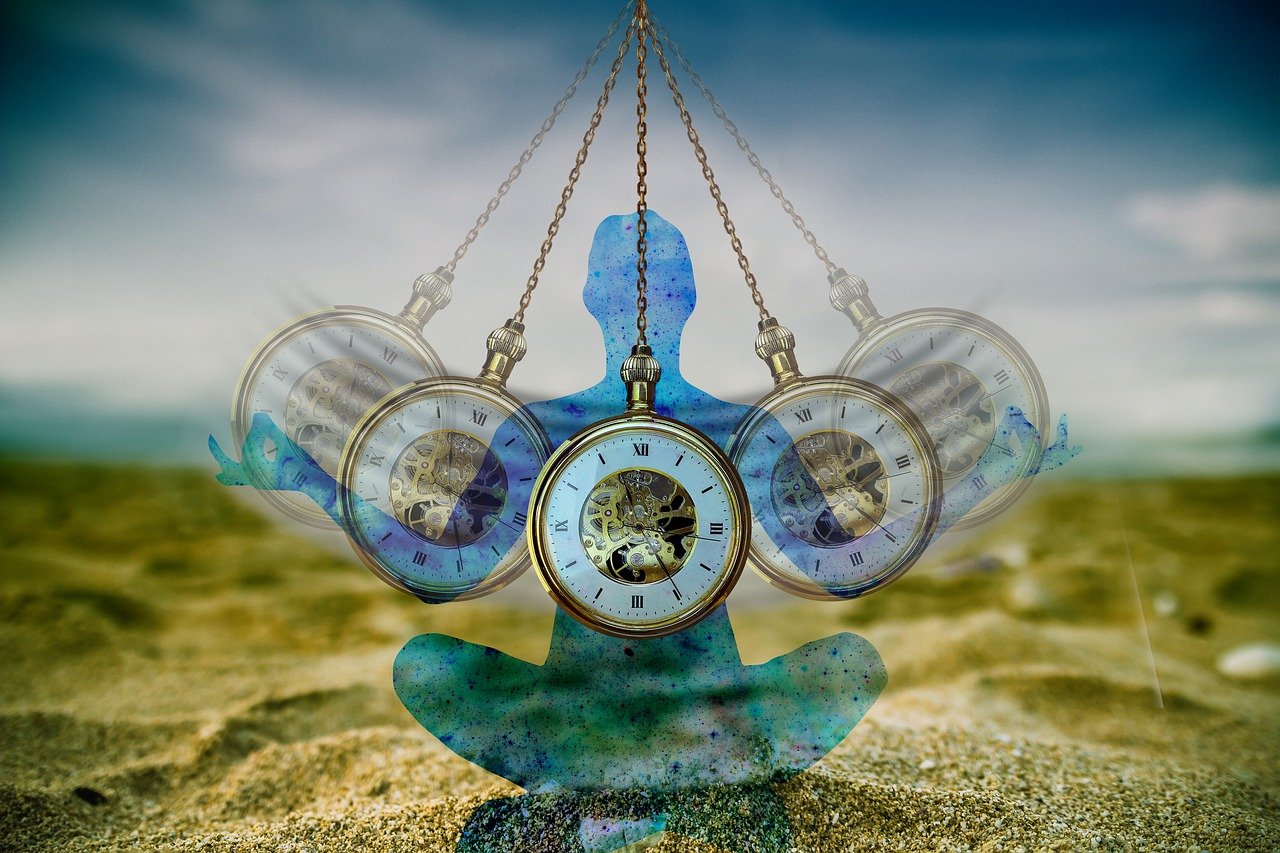ヒンドゥー女神カーリー・破壊と再生、恐怖と慈愛、時間と黒の普遍的象徴
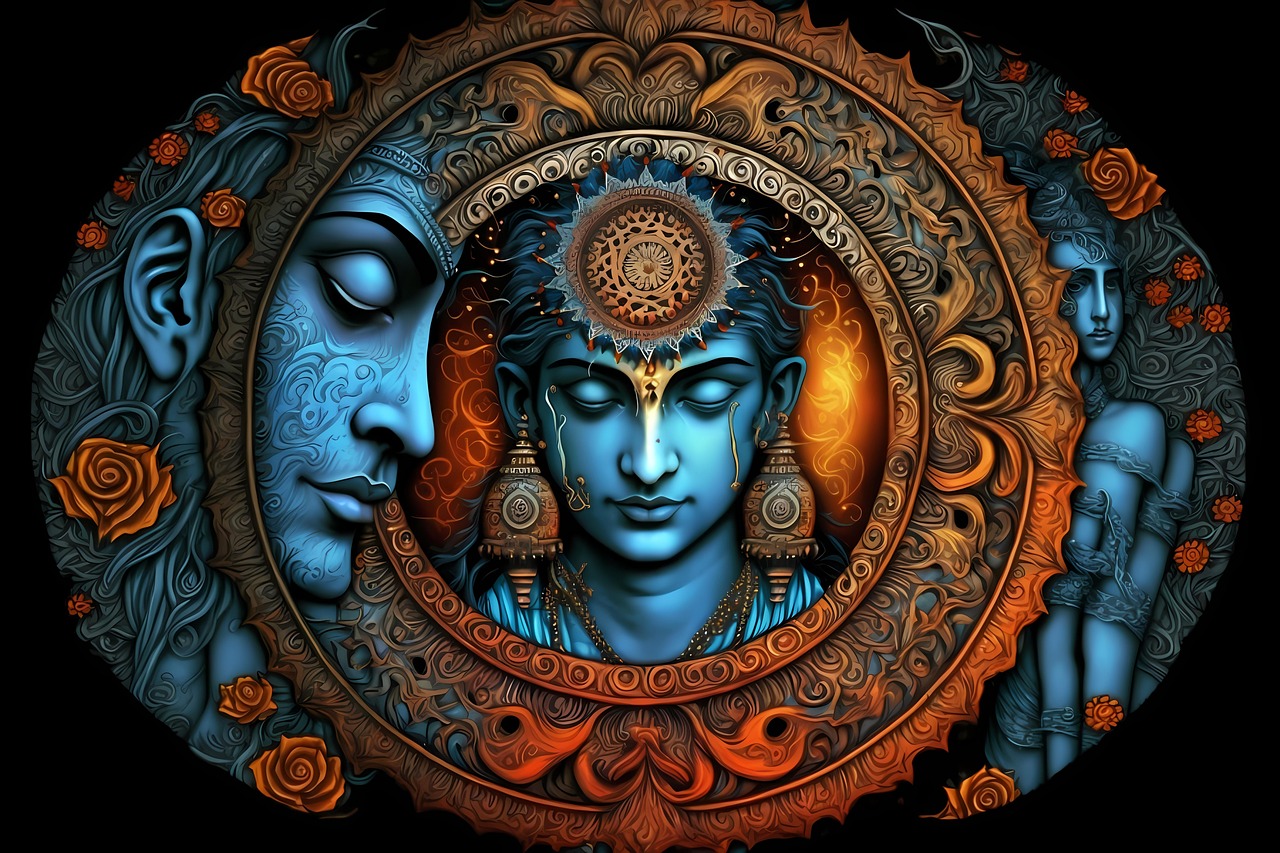
The name Kali means "time" or "black" in Hindi. These elements in her name have a deep symbolism in Hinduism. "Time" represents the cycle of creation and destruction, life and death, symbolizing a universal force that continues to move forward mercilessly against all things. On the other hand, "black" not only represents the unknown and fear, but also represents a profound presence with the potential for purification and rebirth. Her figure, which is depicted with blue-black skin all over her body, represents a cosmic scale that absorbs and envelops all things.
Origin and symbolism of the goddess Kali
Birth as an incarnation from Goddess Durga
The origins of Goddess Kali are particularly deeply connected with the story of Goddess Durga. According to mythology, when Goddess Durga fought against an army of asuras (demons), her anger reached its peak, and from her forehead Goddess Kali appeared. Kali overwhelms his enemies with his overwhelming power, especially the scene in which he defeats an enemy named Laktavilla plays an important role in mythology. Lactavilla has the ability to create an alter ego from his own blood, so Kali absorbed all of his blood and completely defeated him. This anecdote shows that Kali is not just a god of destruction, but also symbolizes the power of purification to get rid of evil.
His role as a god of destruction and rebirth
Kali is more than just a god of destruction. Its destruction can be said to be a preparation for a new rebirth. As the presiding over both creation and destruction, she symbolizes the cycle of the universe. From this perspective, we can understand that Kali's destruction is an act to erase evil and negativity and create a better future. In Hinduism, this role of Kali is accepted as an integral part of maintaining order and harmony, rather than an accidental breakdown.
Special place in Hinduism
Kali occupies a very special place within Hinduism. While she is feared as the god of destruction, she is also widely revered because it is a path to a new creation. In addition, there are many scenes where she is worshipped as a husband and wife deity because she is the wife of Lord Shiva. In addition, she is still popular with many believers today because she is believed to be a being who frees people from misfortune and bad influences and brings them money and success. Faith in Kali continues to spread beyond mere fear and awe as a symbol of compassion and hope.
The terrifying appearance of Kali and its cultural background
The symbolism of the blood-stained tongue and necklace
The iconic figure of Kali, the God of Destruction, includes a necklace with a blood-stained tongue connected to a skull or a raw neck. These are not just a sign of fear and majesty, but also have a deep mystical meaning. The blood-stained tongue is considered to be a symbol of swallowing and purifying evil and injustice. On the other hand, the necklace represents Kali's nature as a being of death, as well as a symbol of the end of samsara and rebirth. In this way, her figure continues to be revered as an expression of the power of destruction and rebirth, of demise and new beginnings, and as a way to make people realize the true nature of life and death.
Majesty and power as a goddess of war
Kali is also known as the goddess of battle, emphasizing her aspect as a god of destruction who defeats evil. In particular, it demonstrated its majesty and power in the fight against the asura Raktavilla. Raktavilla was an enemy with the ability to create countless alter egos every time his own blood fell to the ground, but Kali sucked up every drop of that blood so that it didn't go to waste, defeating him once and for all. This episode symbolizes her overwhelming power and fortitude in confronting and triumphing against evil. The figure embodies the majesty of a warrior and is a powerful inspiration to believers.
Kali's image reflected in Indian art and statues
Kali's overwhelming presence is also strongly reflected in Indian art and statues. Her iconic features, such as her bluish-black body, three eyes, and a long tongue that hangs down with its sharp teeth exposed, are faithfully represented in every detail. Brass and stone statues and paintings often feature mythological scenes, such as Kali in battle or accidentally trampling on Lord Shiva. These works of art visually convey that Kali is not just a symbol of fear, but a being with absolute power of destruction and rebirth.
India's view of religion as a backdrop for the intersection of fear and faith
In the Indian view of religion, fear and faith are often inextricably linked. The terrifying appearance of Kali, the god of destruction, may seem terrifying at first glance, but behind it is a deep sense of compassion. Kali is a terrible destroyer, but she is also seen as a mother who brings fortune to people and rescues them from hardship. This kind of reverent faith that coexists with fear and trust is rooted in the spiritual culture of India and provides a spiritual pillar for people to overcome the difficulties of life. We believe that through prayer to her, believers can be freed from fear and receive the power of rebirth and hope.
Kali transforms from the God of Destruction to the Mother God
The Story of Kali and Lord Shiva
In Hindu mythology, the goddess Kali and Shiva are important beings with a deep relationship. Kali has a terrifying aspect of the God of Destruction, but through her story with Lord Shiva, she is portrayed as a loving figure who calms her urges. One of the most famous anecdotes is that when Kali was about to destroy the earth in the heat of battle, Shiva lay himself at Kali's feet. This action allowed Carly to suppress the impact and stop her own runaway. This episode shows that Kali is a being who controls her powers and values harmony as well as destruction.
Aspects of the Mother Goddess who treats her devotees lovingly
Kali has a strong image as a terrifying god of destruction, but she has the face of a mother god who is very loving to her devotees. Because of her deep affection, Kali is often referred to as the "Kali Ma" (Black Mother). For believers, Kali is a beacon of new hope and breaking down difficulties and hardships. The appearance of responding to the wishes and prayers of devotees and fulfilling the role of a guardian deity is one of the reasons why faith in Kali is deepened. People who wish for good luck and good luck are also expected to have its miraculous powers.
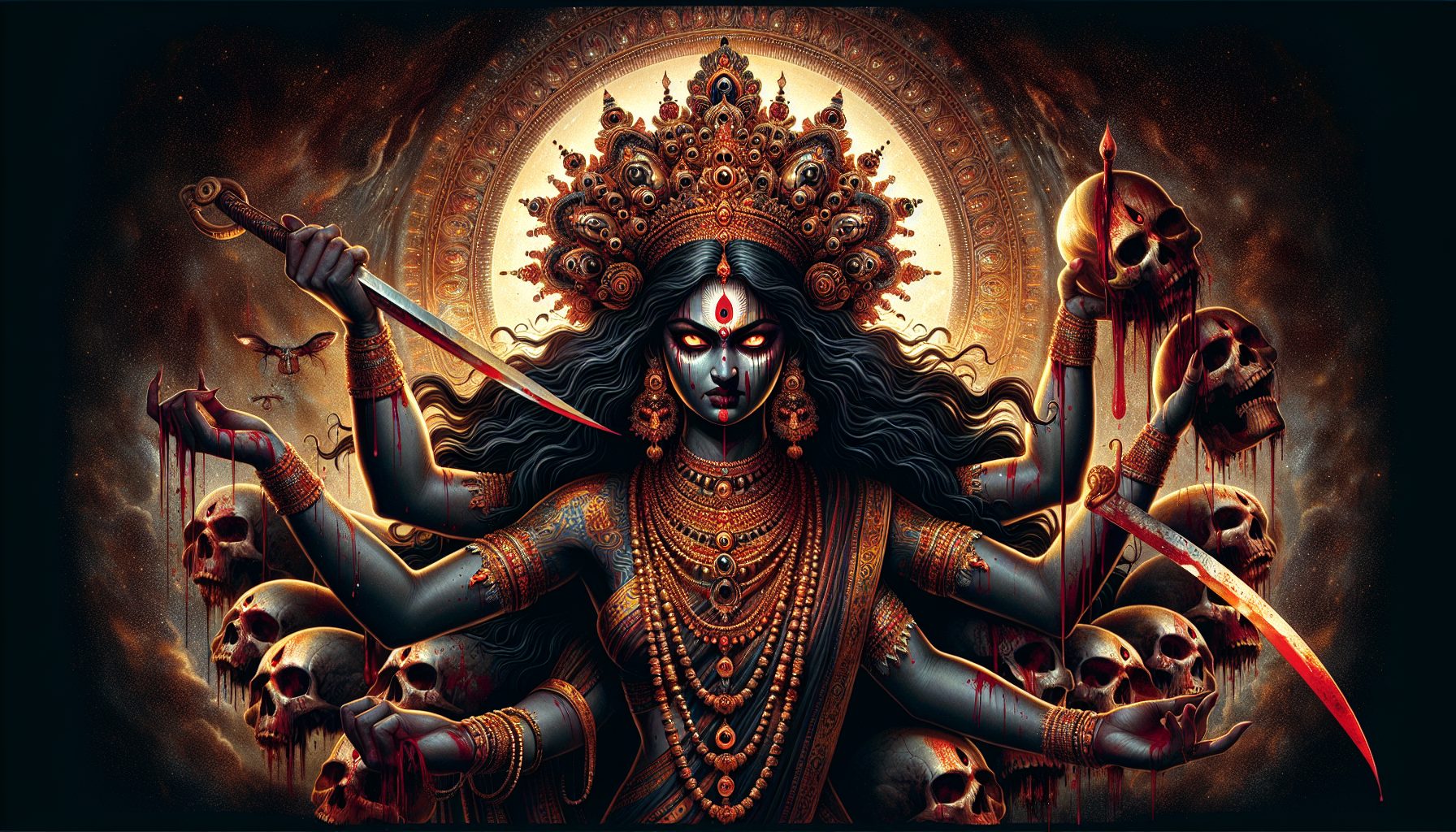
Importance of Kali in Durga Worship
Kali is also a very important part of the worship of Durga because of its nature as an aspect of Goddess Durga. Kali is a being created by Durga's anger when he fought against an army of asura (demons), and is recognized as the "incarnation of battle" of Durga due to his overwhelming power and willpower. In Durga worship, Kali tells stories of battle and destruction, and prays for the power to overcome people's difficulties. Against the backdrop of these myths, Kali is seen as a symbol of not only fear but also the strength to protect oneself and those around her.
The Power of Faith to Transform Fear into Love
One of the most noteworthy aspects of Kali's faith is her ability to transform fear into love. Kali's destructive nature, at first glance, may seem frightening, but by seeing it as the power to remove evil, it gives her a sense of mental peace that frees her from fear. Even in today's world of fear and anxiety, those who believe in Kali are trying to harness its power and carve out their own destiny. The spread of this belief is also influenced by the fact that Kali is believed to bring "tangible results" such as money and good luck. By praying to Kali, people are seeking the strength to find hope and protect themselves even in the midst of despair.
Kali's Faith and Its Significance in Modern Times
The psychological impact of Kali's faith on modern man
In modern times, Kali, the God of Destruction, is recognized not only as a terrifying being, but as a symbol of psychological stability. Kali is the god of both destruction and rebirth, giving people the courage to let go of the old and embrace the new in the face of great change and difficulties. The energy of destruction symbolized by the figure is a symbol of the power to eliminate unwanted things and feelings of anxiety and to lead oneself to a new level.
Kali as a symbol of good luck and money
While Kali is a symbol of destruction, it is also known as the god of money and good luck. The belief that it brings prosperity and happiness beyond difficulties has spread, and more and more people worship Kali, especially when praying for business success and fortune. Kali's sharp tongue and weapons symbolize her ability to cut through obstacles and eliminate the unnecessary, which is associated with the energy to forge new paths in life and business.
Rethinking and understanding from a religious perspective
In traditional Hinduism, Kali has long been portrayed as a terrifying god of destruction, but in modern religious perspectives, the love and compassion hidden behind its horrors are being reevaluated. Kali is said to crush evil and injustice and maintain cosmic harmony. From this perspective, Kali's role has come to be seen as more than just destruction, but also a symbol of creation that brings good luck and prosperity.
Kali's Role in Yoga and Spiritual Practices
Kali is also important in the field of yoga and spiritual practice. In the process of meditation and self-exploration, people often confront anxiety and past traumas, and Kali is said to help cleanse these negative energies and arrive at their inner truth. Through its destructive aspects, it has garnered deep faith from yoga practitioners and spiritual seekers as a catalyst for mental purification and spiritual evolution.
A New Image of Kali in the Age of Globalization
In today's globalized world, Kali's faith is not limited to India, but is spreading all over the world. In the West, Kali is sometimes taken up as a symbol of female strength and empowerment, and a new image of her as a goddess who helps individuals grow and express themselves is being formed. As a spiritual entity that transcends religions and cultures, the worship of Kali is also widespread among yoga and meditation enthusiasts. In this way, Kali, the God of Destruction, has influenced many people around the world, changing his role according to the times.
